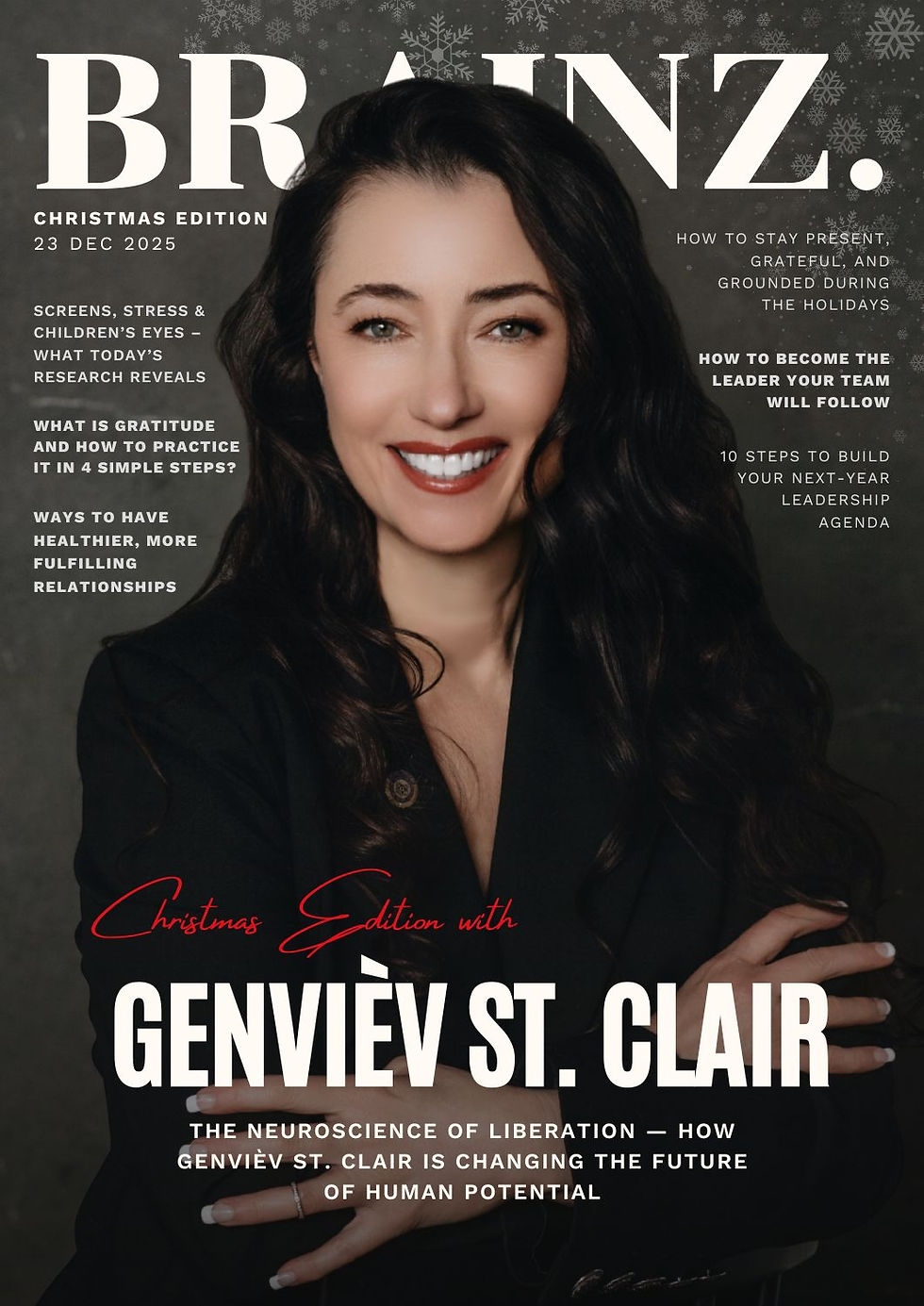Who Sold Us the Lie of Sickness?
- Brainz Magazine

- Sep 16
- 4 min read
Kass James is an assistive technology specialist with a master’s in management of information systems from University of Houston’s Bauer College of Business. Fully licensed in ADA compliance and environmental access, he’s a partner at The Spoonie Advocate Associates.

Within the American healthcare community, it’s an open secret that things aren’t going well. Both insurance and healthcare costs are in a bubble that’s fit to burst, with catastrophic consequences for those with life-threatening conditions. Yet socialized healthcare models don’t seem to fit the American system any better than current systems, and even the UK’s NHS is bursting at the seams for the same reasons as the American market.

Who broke us with sickness and why?
Unfortunately, the sad truth is that we broke ourselves by not understanding the business of healthcare. Make no mistake, healthcare is a business, just unlike any other. What no one seems to realize is that it’s not a storefront, it’s a utility. To understand how this happened, look back to when the systems were small and mostly private. Small practice doctors charged for treatment, as did pharmacies, and so did hospitals. A doctor operating on the fee-for-service model in the 1950s wanted to see as many patients as they could, as they got paid by the person rather than the level of care. By maximizing the number of patients, they received the most profit. However, customers are no longer directly paying doctors, instead, they pay the insurers a subscription fee to cover their healthcare expenses.
Insurance changed healthcare from a product into a utility.
The more a patient is seen by a doctor and the more medication they require, the more money insurance will pay out. And that’s bad business. Because the only way an insurer maintains profitability is by doing two things, denying coverage or raising rates. Those are two trends we see with increasing frequency, escalating into a growing rage against the healthcare system.
These companies appear unable to change what they value. They seem to think that the only way to stay profitable is by reducing what they spend on coverage, rather than addressing the root causes of those expenses. This strategy is, in the short term, profitable and has worked in the short term. But now, we are entering the long-term phase of that strategy, and that bubble is bursting.
Because you don’t make money from sick people. Ask any hospital administrator, and they’ll tell you that the most expensive department is the ICU, followed closely by the emergency department. Hospitals take a net loss on these departments, averaging more than $1,200 per ICU bed per day. And if someone is readmitted, there’s a good chance that Medicare and Medicaid will reduce the reimbursement percentage for that care. Revenue margins in hospitals are minuscule and grow smaller every year.
Healthy people are what keep both insurers and clinicians in the black
Annual check-ups, vaccinations, and minor routine procedures generate the highest profit margins for doctors and have the lowest costs for insurers. These are quick, cost nearly nothing but time, and incur few additional expenses. Even urgent care systems turn a profit because they concentrate on easily treatable illnesses and injuries in outpatient settings. Not only do these procedures produce the most profit, but they also decrease costs caused by untreated or undiagnosed conditions.
Maintaining healthy customers is what makes these insurance companies the most money, yet they continually refuse to pay for it. Colonoscopies and MRIs cost considerably less than aggressive cancer treatments. Preventive medications that effectively manage chronic conditions are often denied, forcing customers to pursue less effective treatments that can result in complications. Mental health treatment is frequently labeled as elective or unnecessary, yet it is a leading cause of substance abuse problems that cost insurers millions. Routine dental care has repeatedly demonstrated significant health benefits, yet many basic dental plans refuse to cover essential imaging.
Different business models benefit insurers, healthcare systems, and patients
Strangely, changing the value of the healthcare industry is more about shifting perspectives than restructuring. We already have companies demonstrating solid profits through capitated payment systems, long-term care options outside of the ICU, affordable alternatives to emergency departments, and a focus on preventive care. Essentially, the solution already exists, and it doesn’t involve raising rates or denying care.
It's hard to pinpoint who sold America the lie that sickness is profitable, but insurance companies and healthcare providers swallowed it like a poison pill. It’s literally killing us, and the healthcare industry could fix it. Many politicians talk about making America healthy, but it’s about prioritizing and valuing preventive care and effective management of chronic conditions.
The best healthcare is care that keeps you from getting sick in the first place, which turns a profit for everyone.
Read more from Kass James
Kass James, Healthcare Business and Disability Specialist
Kass James is a forerunner in the field of disability rights, corporate responsibility, and healthcare business. Having been physically disabled for most of his life, Kass was acutely aware of the lack of accessibility in the workplace. His work focuses on restructuring healthcare to increase profitability while benefiting patients, as well as doing patient assessment for ADA compliance and assistive technology. He’s a partner with the Spoonie Advocate Associates, an organization pushing for increasing value and patient outcomes through common sense and responsible change.










.jpg)